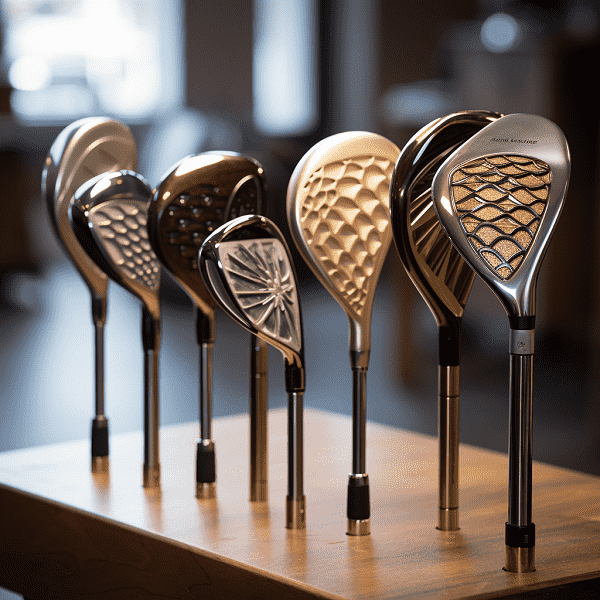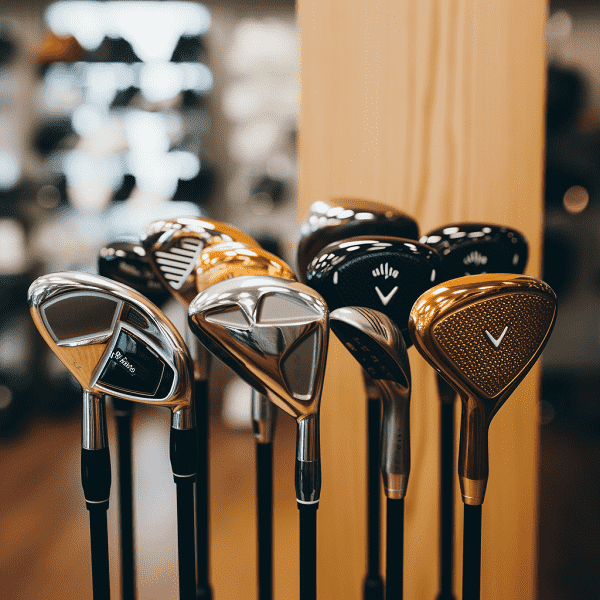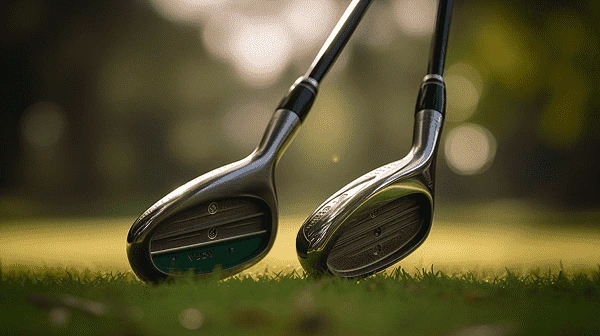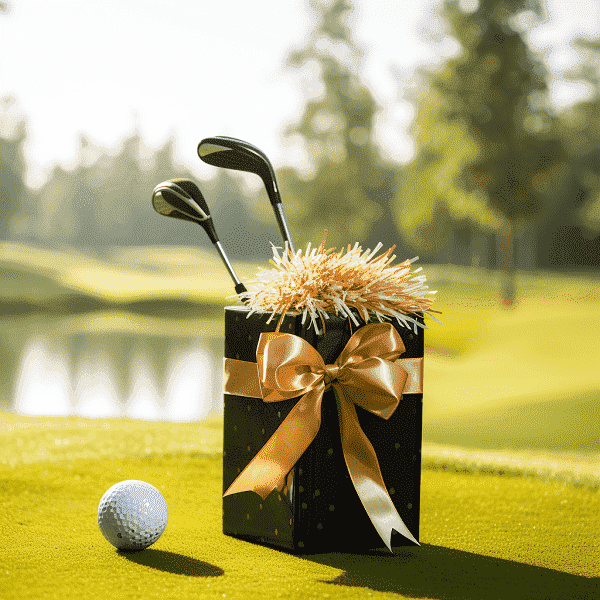How to Buy Golf Clubs as a Gift: The Complete Guide
Want to surprise your favorite golfer with a shiny new set of clubs? While golf clubs make an excellent gift, choosing the right ones requires extensive knowledge of the recipient’s preferences, playing style, and skill level. Follow this comprehensive 4,000-word guide to become an expert at buying golf clubs as a gift.

Research the golfer
The first critical step is gathering important information about the player you’re buying for. This will allow you to select clubs tailored to their specific needs and playing profile. Consider the following factors:
Experience level
Are they a complete beginner just starting out, a mid-handicapper shooting in the low 100s, or a seasoned golfer with a single-digit handicap? High handicappers early in their development need maximum forgiveness from game improvement clubs that minimize mis-hits and compensate for deficiencies. Mid handicappers in the 100’s benefit from forgiveness while maintaining some shot shaping ability and feel.
Low handicap golfers prefer precision clubs that offer maximum workability to shape shots and control distance consistency. Game-improvement irons have wider soles, thicker toplines, perimeter weighting, offsets and cavity back designs to help newer players. Better players gravitate toward thinner, forged blade irons and muscleback designs for superior shot shaping, trajectory control and forged feel.
Gender and Age
Men generally require more distance from their clubs due to higher swing speeds, while senior golfers require lighter graphite shafts and more flex as they lose upper body strength and rotational power. Most major club brands design specific lines for men, women and seniors. Women’s clubs are lighter overall. They have more flexible shafts, lower kick points and extra loft for slower swing speeds. Senior models maximize distance with lighter graphite shafts, graduated loft sequences such as 16 degree 4 irons and offset for easier launch. Youth golfers may need appropriately sized junior clubs with shorter, more flexible shafts and smaller grips.
Hand Dominance
This seems obvious, but always confirm you know if the golfer is left or right handed before selecting clubs. About 90% of golfers are right-handed, but famous pros like Phil Mickelson are left-handed. Their dominant bottom hand, which is lower on the grip, determines which clubs they need. True ambidextrous players who swing comfortably from both sides are extremely rare. Never assume.
Frequency of play
How often does the golfer hit the course each month? Occasional recreational golfers who play once or twice a month value ease of use and consistency. Avid enthusiasts who play several rounds a week or every day need maximum durability from their clubs to withstand very heavy repetitive use. Retired golfers often fall into the frequent golfer category! The more they play, the more they appreciate clubs that fit their swing path, angle and speed.
Course Conditions
Does the golfer tend to play pristine private country club courses or rougher public munis with less than ideal conditions? Hard, dry conditions with tighter lies like Scottsdale, Arizona require different sole grinds and bounce profiles than the soft, lush Kikuyu grass of Hawaii and Florida. Wet conditions also degrade face grooves much faster. Understanding typical environments will help you select appropriate club parameters, including sole width, bounce, camber and groove sharpness.

Goals and Desires
Talk with the golfer about what areas of their game they are most interested in improving. Do they need more driver distance and consistency off the tee? Is their typical mistake a big slice or push fade? This suggests a higher loft driver in the 10.5-12 degree range to minimize sidespin. Are you struggling from 100 yards and in with precise wedge distance control? Adding a custom gap or lob wedge could be a useful weapon. Knowing your goals will help you select clubs designed to meet those needs.
Brand allegiance
Most golfers are loyal to a major manufacturer such as Titleist, Callaway, Taylormade, Ping or Cobra. They trust their brand’s performance. Buying a new club that matches their existing set is usually a safe bet. Check what brand name is on the majority of your current clubs. Also consider any favorite sponsored touring pros who play the same equipment. Deviating from your preferred brand will require more careful fitting.
Budget Range
There is a very wide range in golf club prices from around $70 for a basic used wedge to $2000+ for a fully customized PGA Tour level driver fitted by top professionals. Set a comfortable budget taking into consideration your skill level – advanced players will appreciate and benefit more from ultra premium equipment. Beginners who are still developing basic swing mechanics and consistency.
Current year models cost more than lightly used clubs that are 1-3 years old, but still provide excellent performance. High handicappers on a budget will do just fine with a nice condition 3 year old driver. Shop clearance and previous year’s closeouts for the best value. Hard-to-fit body types such as very tall players over 6’4″ or petite women may warrant a professional custom fit.
Get input from golf professionals
If you don’t have an extensive golf background, don’t despair. There are experts available to guide you through the club selection process. Make an appointment with a professional club fitter or a trusted pro shop at a local course. Explain that you’re buying a gift and share the important information you’ve gathered about the recipient’s needs, preferences and golf game. The pro can point you toward appropriate club models, shafts, specifications and hardware for an optimal, personalized fit.
A custom full bag fitting uses high-tech launch monitors to analyze the golfer’s precise swing path, impact angles, consistency and ball flight. While more expensive, this data removes all the guesswork. At a minimum, get properly measured for critical dimensions such as club lengths based on height and wrist-to-floor ratio. The lie angle should match your posture and spine angle. Remember, professional club fitting and instruction also make phenomenal stand-alone golf gifts when paired with the clubs.

Choose between new and used clubs
Brand-new, current-year golf clubs offer the latest technologies such as forged faces, adjustable hosels and movable weights, composites and performance-enhancing coatings. But new clubs come with the highest prices because they are right off the showroom floor. Last year’s models or even clubs from 2-3 years ago offer very comparable performance and innovation at a discount of 20-40% off full retail price when purchased new in mint condition.
Used clubs that are 1-5 years old are an even more affordable option, allowing you to get top brands custom fit for the player at 40-70% less than buying the clubs brand new. Shop with trusted retailers like Callaway Preowned, globalGolf or 2ndSwing who provide detailed club condition reports so you know exactly what you’re getting. Scratch and dent models with purely cosmetic face or crown blemishes can also yield big savings on great-performing clubs that don’t compromise on technology.
Newer isn’t always better when a proper custom fitting analyzes the individual golfer’s needs. This is especially true for more experienced players who know how to work the golf ball and shape shots. They often gain less performance advantage from yearly incremental technology improvements than beginners and high handicappers. Carefully consider the recipient’s skill level, budget, and your own comfort level with buying used when deciding between new and used.
Irons: The heart of the bag
A new set of irons can transform a golfer’s game, so take care when selecting. Focus on the proper shaft flex, grip size, lie angle and length derived from a professional fitting. Softer flexes and graphite shafts help slower swing speeds maximize distance without losing control. Stiffer steel promotes consistency for stronger players.
Select the proper width and sole design to match the turf conditions the golfer typically plays. Look for offset, which helps limit slices and fat shots in game improvement irons. Advanced players may prefer minimal offset for ultimate workability. If replacing only a few irons, try to match the characteristics of the existing set. New wedges are also a great pairing with irons since the short game accounts for many shots.
Choose key clubs wisely
Rather than buying an entire bag, focus on the 2-3 clubs the golfer needs most:
- Driver for maximum distance off the tee. Consider adjustable models for loft, lie and weight. Larger 460cc heads are more forgiving.
- Mallet styles are more stable and forgiving with alignment aids. Get the right length, lie and grip size.- Wedges for short game control. Carry lofts such as 52 and 56 degrees. Forged heads and aggressive grooves create spin on pitch shots.
- Use rescue hybrids to replace hard-to-hit long irons such as 2 and 3 irons. Select hybrid lofts that match the irons being replaced.
- Irons should be professionally fitted for lie angle, length, flex and grip size. Focus on maintaining consistent distance.
Do your homework
Research specific club models from leading manufacturers such as Titleist, Callaway, Ping, TaylorMade, Cobra and Cleveland. Read reviews in golf magazines and forums to understand performance. Watch YouTube reviews that explain the technologies. Study the terminology and specifications of different clubs. Focus on basics such as loft, shaft flex, bounce, MOI, offset. Let the recipient’s needs and skill level guide your choices, not marketing claims. Over time, you will gain knowledge by osmosis.
Check Return Policies
Given the investment clubs represent, make sure the retailer or pro shop has a solid return policy for sizing, fit or performance issues. Most allow returns within 30 days, less restocking fees. Reputable online retailers offer 12-30 day trial periods and generous return policies on used clubs. Understand any fees if adjustments, such as re-gripping or lie adjustments, are required upon return.
Consider lessons
Clubs can only go so far if the golfer’s swing technique needs work. Combining new clubs with a package of lessons from a PGA-certified instructor completes the package. Most areas have independent instructors, academies and public courses that offer very affordable group and individual golf lessons, including beginner programs. Proper coaching will maximize the results of their new clubs.
Accessorize the gift
Add a few extra accessories to personalize and complete the gift package:
- Custom grips installed to their preferred size and feel,
- Monogrammed head covers to protect the woods
- Logo balls, ball markers, divot tools and tees,
- A premium golf bag with plenty of pockets,
- Stylish knit headwear to show off their new clubs,
- A leather valuables pouch for phone, wallet and keys.
Presentation Matters
Take care with the surprise reveal and gifting experience to build maximum anticipation and excitement for the new clubs:
- Arrange for delivery in a golf shop gift-wrapped box as opposed to a generic brown box,
- Time it just before a scheduled tee time or range session for immediate use,
- Offer to join their first round with the clubs to see them in action and get feedback,
- Make it a memorable unveiling experience, not just a box delivery,
- Include a thoughtful card explaining why you chose these particular clubs.
With a little research and planning, you can select the perfect clubs to lower your scores and provide years of golf enjoyment. Follow these tips to become a hero to the enthusiast in your life while deepening your own knowledge. Seeing the excitement and gratitude on their faces will make all of the effort worthwhile. Let the new technology boost their confidence and make every round a pleasure.
Key information includes skill level, frequency of play, brand preferences, height, dominant hand, typical course conditions, improvement goals, age, gender and budget. This will help you select the right club types, shafts, specifications and features for their game.
It’s better to buy 1-3 key clubs that the golfer specifically needs, such as a driver, putter, wedge or hybrid, rather than a cheap full set. These will make a bigger impact and you can better allocate your budget to quality.
Top brands like Titleist, Callaway, TaylorMade, Ping, Cobra and Mizuno make great gifts. Match the brand to their current game. Japanese brands like Honma and Miura offer excellent craftsmanship for experienced players.
Absolutely! You can find quality, lightly used clubs from top brands at great discounts. Shop through trusted sites that provide detailed condition ratings. Most golfers value fit over newness.
Make the presentation special with custom engraving, gift wrapping and a tee time. Offer to join them for their first round to see the clubs in action. Combine clubs with lessons for a complete experience.

